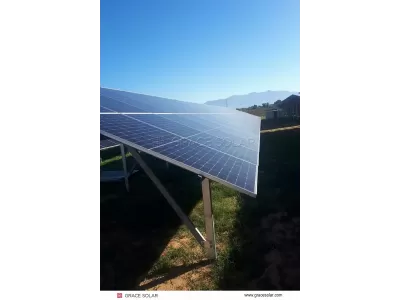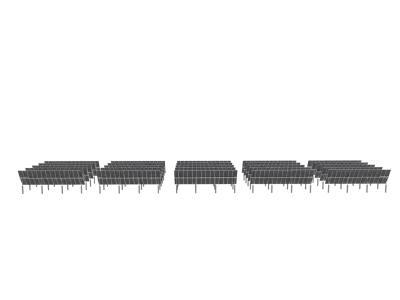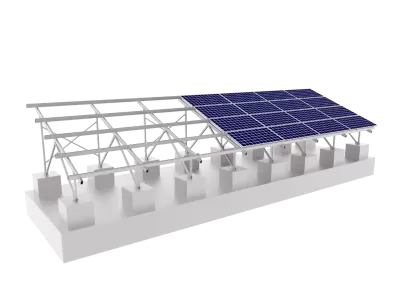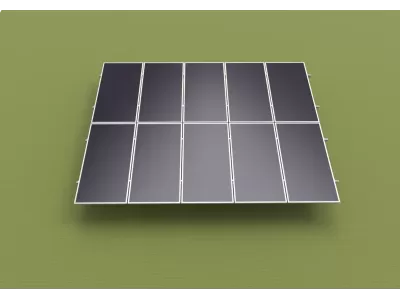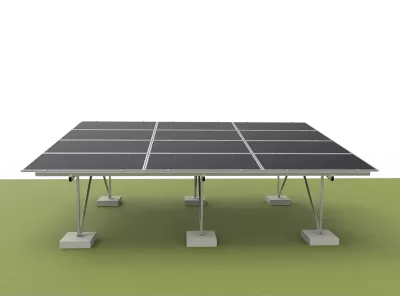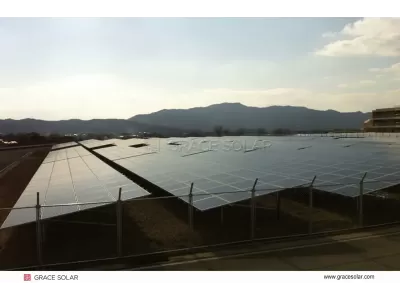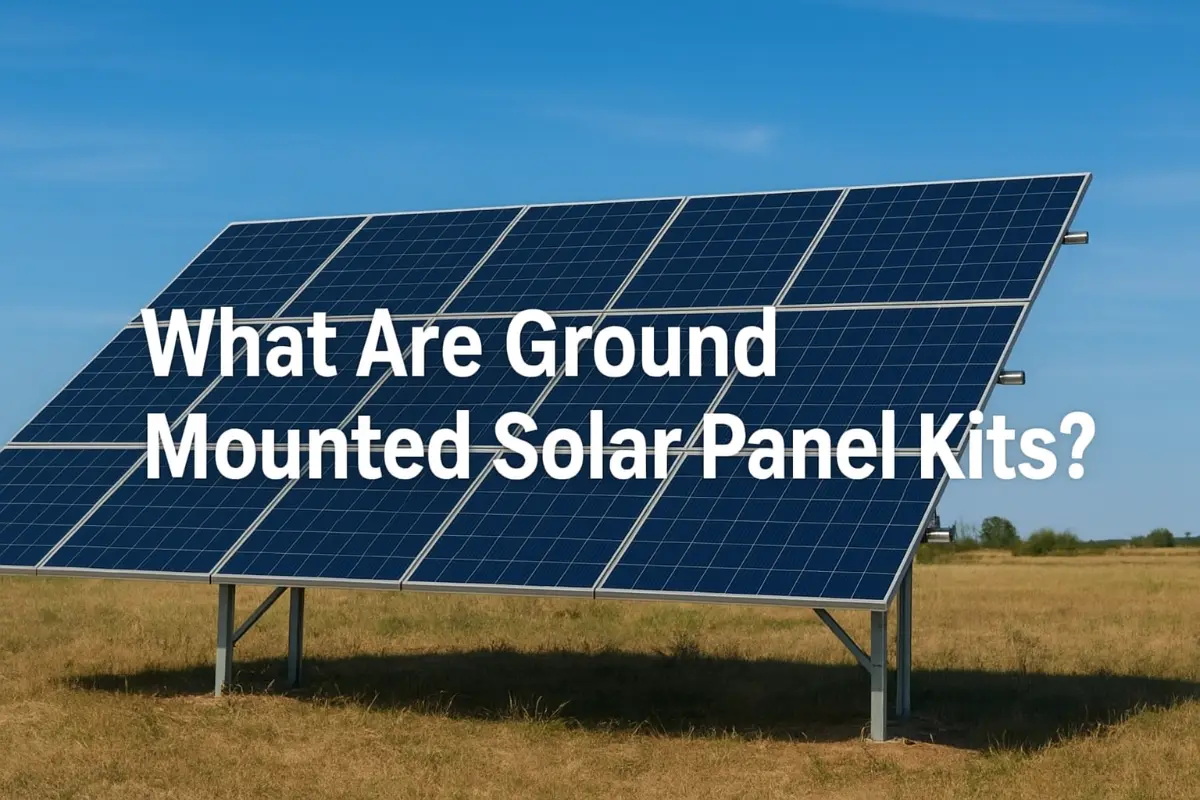
Table of Contents
- → What Are Ground Mounted Solar Panel Kits?
- → Types of Ground Mount Systems
- → Components of a Complete Ground Mount Solar Kit
- → Advantages of Ground Mount Solar Systems
- → How to Choose the Right Ground Mount Solar Kit
- → Grace Solar Ground Mount Solutions
- → Installation Considerations and Process
- → Cost Analysis and ROI
- → Frequently Asked Questions
What Are Ground Mounted Solar Panel Kits?
Ground mounted solar panel kits are comprehensive packages that include all necessary components to install a complete solar energy system on the ground rather than on rooftops. These all-in-one systems typically feature high-efficiency solar panels, robust mounting structures, advanced inverters, and all required hardware for a fully functional installation that can power homes, businesses, or agricultural operations.
Ideal for properties with ample space, ground mounts offer superior flexibility in positioning and angle optimization compared to rooftop systems. They're particularly valuable for residential properties with shaded roofs, commercial installations requiring large energy outputs, agricultural operations needing remote power, and situations where maximum energy production is essential for achieving energy independence.
Modern ground mount kits have evolved significantly, now offering professional-grade components that rival commercial installations. With proper planning and installation, these systems can deliver decades of reliable clean energy while significantly reducing or eliminating electricity bills.
Types of Ground Mount Systems
Standard Ground Mount Systems
These fixed-tilt systems use multiple support posts embedded in concrete foundations or ground screws. They provide a stable, permanent structure that can withstand extreme weather conditions while maintaining optimal panel orientation. Standard mounts are the most cost-effective option and work well for most residential applications where seasonal angle adjustments aren't necessary.
Pole Mount Systems
Single or multiple-pole systems elevate solar arrays higher above ground, providing better air circulation and accessibility. These systems often incorporate seasonal tilt adjustment capabilities for enhanced performance and are ideal for areas with potential ground-level obstructions or snow accumulation concerns.
Ballasted Ground Mount Systems
Non-penetrating systems that use weighted bases instead of ground penetration. Ideal for sites where digging isn't feasible, protected landscapes, or temporary installations requiring minimal site impact. These systems are popular for commercial flat sites and areas with soil conditions that make traditional foundations challenging.
Solar Tracking Systems
Advanced systems that follow the sun's path throughout the day, increasing energy production by 25-35% compared to fixed systems. Available in single-axis and dual-axis configurations, tracking systems maximize energy harvest in locations with consistent sunlight and are particularly effective for commercial-scale installations where space optimization is critical.
Components of a Complete Ground Mount Solar Kit
Solar Panels
High-efficiency monocrystalline or polycrystalline panels ranging from 350W to 500W+ per panel. Tier-1 manufacturers ensure reliability and long-term performance warranties of 25+ years. Most quality kits include panels with robust frames, anti-reflective coatings, and excellent low-light performance characteristics.
Mounting Structure and Racking
Galvanized steel or aluminum racking systems designed for specific soil conditions and wind loads. Includes rails, brackets, clamps, and foundation components engineered to withstand local environmental conditions. Quality systems feature corrosion-resistant coatings and structural certifications for peace of mind.
Inverters
String inverters for cost-effective installations or microinverters for enhanced shade tolerance and panel-level monitoring. Grid-tie, hybrid, and off-grid configurations available to match specific energy needs. Modern inverters feature advanced monitoring capabilities, rapid shutdown compliance, and high conversion efficiencies exceeding 98%.
Electrical Components
Complete wiring packages including UV-resistant PV cables, combiners, disconnects, comprehensive grounding equipment, and rapid shutdown devices for code compliance. Quality kits include all necessary connectors, conduit, and junction boxes for a professional installation.
Monitoring Systems
Advanced monitoring solutions for real-time performance tracking, fault detection, and energy production analysis. Many systems now include mobile app integration, web portals, and automated alert systems to ensure optimal system performance and quick issue resolution.
Advantages of Ground Mount Solar Systems
Optimal Orientation and Tilt
Ground systems can be positioned at the ideal angle and direction for maximum sun exposure, typically increasing energy production by 15-25% compared to rooftop constraints. This flexibility allows for perfect south-facing orientation (in the northern hemisphere) and optimal tilt angles based on geographic latitude.
Enhanced Cooling and Efficiency
Better air circulation around panels reduces operating temperatures, improving efficiency and extending component lifespan. Solar panels naturally lose efficiency as temperatures rise, and ground systems typically operate 5-10°C cooler than comparable rooftop installations.
Easy Maintenance Access
Ground-level access simplifies cleaning, snow removal, inspections, and repairs without roof safety concerns. This accessibility reduces maintenance costs and ensures optimal system performance through regular upkeep and immediate issue resolution.
Scalability and Expansion
Easy system expansion as energy needs grow, without roof space limitations or structural concerns. Ground mounts can be designed with future expansion in mind, allowing for additional panels as electricity demands increase with electric vehicle adoption or home additions.
How to Choose the Right Ground Mount Solar Kit
Assess Your Energy Needs
Review 12 months of utility bills to determine average monthly kWh consumption. Consider future needs like EV charging, home additions, or lifestyle changes that may increase electricity usage. Professional energy audits can provide detailed insights for optimal system sizing.
Evaluate Site Conditions
Conduct solar site assessment for shading, soil type, topography, and available space. Standard systems require 350-600 sq. ft. per 10kW. Professional site evaluations should consider seasonal sun path variations, potential future shading from growing trees, and soil bearing capacity for structural requirements.
Select Appropriate System Size
Residential kits typically range from 4kW to 20kW, while commercial systems can extend to 100kW+. Match system size to energy goals and budget, considering net metering policies and potential future energy needs. Oversizing slightly can accommodate future electric vehicle charging or home electrification projects.
Consider Local Regulations
Research zoning requirements, setback rules, permit processes, and utility interconnection policies in your area. Many jurisdictions have specific requirements for ground-mounted systems regarding height restrictions, fencing, and visibility from public spaces.
Grace Solar Ground Mount Solutions
As a global leader in solar mounting systems, Grace Solar brings unparalleled expertise to ground mounted solar installations. With over 48GW of global cumulative installed capacity and ranking among the top 5 in global market share, our engineering excellence ensures reliable performance in diverse conditions from extreme cold to desert heat.
GS-Smart Ground Mounting System
Our flagship ground mount solution features advanced engineering for maximum durability and installation efficiency. Designed to withstand extreme weather conditions up to 170 MPH winds, the system offers professional-grade performance for both residential and commercial applications with these standout features:
- UL 2703, TUV, CE, and JIS certified components for global compliance
- Pre-engineered kits for rapid installation with reduced labor costs
- Compatibility with all major solar panel brands and configurations
- Multiple foundation options including ground screws, concrete piers, and ballasted systems
- 25-year product warranty backed by global insurance partners
- Wind tunnel tested designs optimized for specific regional conditions
Why Professionals Choose Grace Solar
With installations spanning 100+ countries and partnerships with Global Top 500 companies, Grace Solar's commitment to "Do it right the first time" ensures every project delivers optimal returns. Our 2000m² experiment center and 100+ patents demonstrate our dedication to innovation and quality that stands the test of time in diverse environmental conditions.
Our global presence includes market leadership in Japan and significant shares in North American and European markets, ensuring that our products meet the most stringent international standards and local requirements. The Grace Solar ground mount systems incorporate lessons learned from thousands of installations worldwide, delivering proven reliability and performance.
Installation Considerations and Process
Site Preparation
Clear vegetation, level the installation area, and mark foundation locations according to system design specifications. Proper site preparation ensures stable foundations and optimal system performance. Consider drainage patterns and potential erosion control measures during this phase.
Foundation Installation
Choose between concrete footings, ground screws, or ballasted bases based on soil conditions and local building codes. Professional soil analysis can determine the optimal foundation type for long-term stability and load-bearing capacity in your specific location.
Structural Assembly
Erect mounting posts, install rails, and secure all structural components according to manufacturer specifications. Proper torque specifications and alignment are critical for system longevity and wind resistance. Professional installation teams typically complete this phase efficiently with minimal errors.
Panel Installation and Wiring
Mount solar panels, connect electrical components, and implement proper grounding and rapid shutdown systems. All electrical work should comply with NEC standards and local building codes. Final commissioning includes system testing, performance verification, and monitoring system activation.
Cost Analysis and ROI
Initial Investment Breakdown
A typical 10kW ground mount system costs between $25,000-$35,000 before incentives, with components representing 60% of costs, labor 25%, and permits/engineering 15%. High-quality racking systems like those from Grace Solar typically account for 15-20% of total system costs but provide long-term value through durability and performance.
Financial Incentives and Payback Period
The 30% federal investment tax credit significantly reduces net system costs. Additional state and local incentives can further improve economics. Most residential systems achieve payback in 6-10 years, with commercial installations often seeing faster returns due to scale efficiencies and accelerated depreciation benefits.
Long-Term Value Proposition
Beyond electricity savings, ground mount systems typically increase property values and provide protection against future electricity rate increases. Systems with quality components and professional installation routinely deliver 25+ years of reliable service with minimal maintenance costs, making them excellent long-term investments.
Frequently Asked Questions
How much space do I need for a ground mount solar system?
A typical 10kW system requires approximately 575-700 square feet of clear space. Smaller 4kW systems need about 250-350 square feet, while larger commercial arrays can require several acres. Space requirements vary based on panel efficiency and array configuration, with higher efficiency panels requiring less space per watt.
Are ground mount systems more expensive than rooftop?
Ground mounted systems typically cost 20-35% more than equivalent rooftop installations due to additional racking and foundation requirements. However, their increased energy production (15-25% more) often provides better long-term value and faster effective payback, especially in areas with less-than-ideal roof conditions.
Can I install a ground mount system myself?
While DIY installation is possible for experienced individuals, we recommend professional installation for optimal performance, safety, and warranty compliance. Many Grace Solar systems are designed for contractor-friendly installation, but electrical work and foundation engineering typically require licensed professionals.
Do ground mount systems require maintenance?
Regular cleaning, vegetation management, and periodic inspections are recommended. Easy ground-level access makes maintenance simpler than rooftop systems. Most systems require semi-annual cleaning and annual professional inspections to ensure optimal performance and identify potential issues early.
How long do ground mount systems last?
Quality ground mount systems like those from Grace Solar are designed for 25+ years of service life. Solar panels typically carry 25-year performance warranties, while mounting systems feature 10-25 year structural warranties. Proper installation and maintenance can extend functional life beyond warranty periods.
Ready to Explore Ground Mount Solutions?
Discover how Grace Solar's ground mount systems can maximize your energy production and return on investment. With global experience spanning 100+ countries and engineering excellence backed by 100+ patents, we provide solutions trusted by homeowners, businesses, and installers worldwide.
Explore our complete range of solar solutions and discover why we rank among the top 5 global solar mounting manufacturers with 48GW of cumulative installed capacity supporting the world's transition to clean energy.

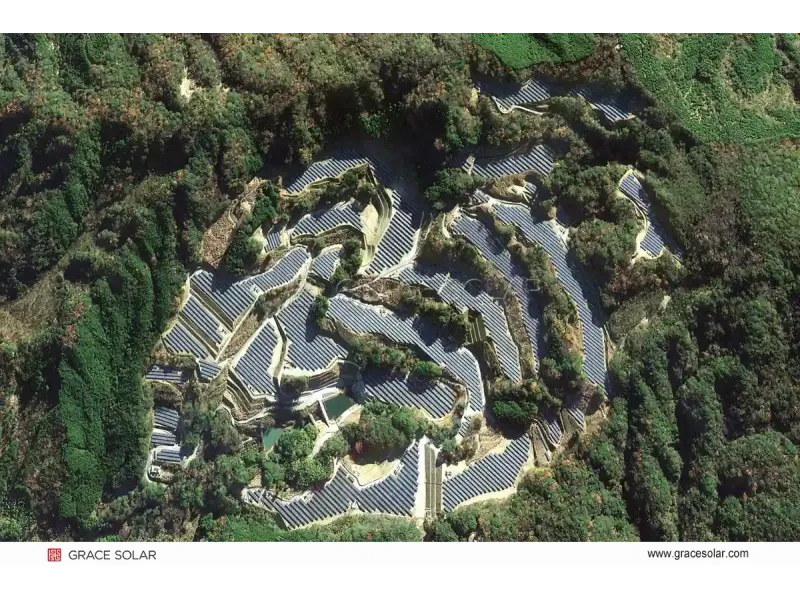

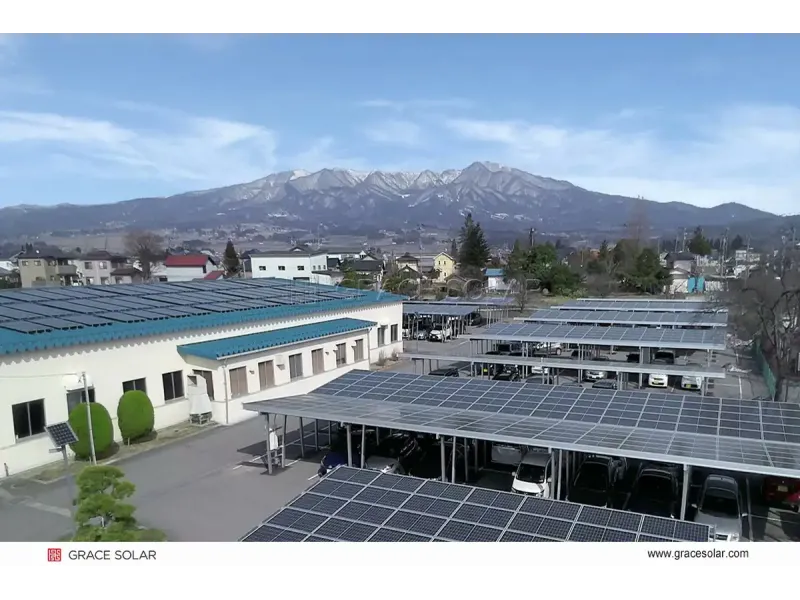

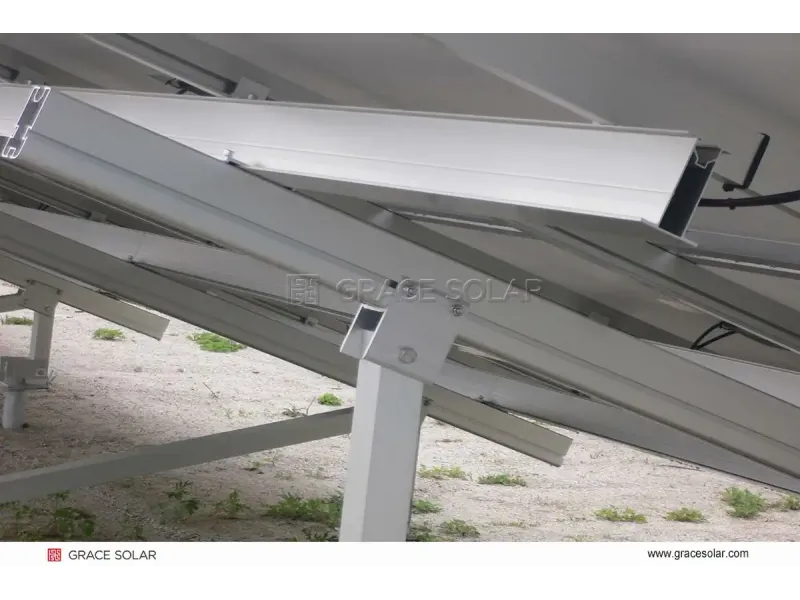
/Aluminum%20alloy%20solar%20ground%20mount%20system%20for%20residential%20solar%20panels-400x300w.webp)
/Modular%20ground-mounted%20solar%20structure%20with%20corrosion-resistant%20coating-400x300w.webp)
/Adjustable%20tilt%20angles%20on%20Grace%20Solar%20landscape%20mounting%20system-400x300w.webp)
/Commercial-scale%20solar%20farm%20using%20VV-Type%20landscape%20placement-400x300w.webp)
/N-Type%20Aluminum%20Solar%20Ground%20Mounting%20System%20with%20Adjustable%20Tilt-400x300w.webp)
/Residential%20Ground%20Mount%20System%20with%200-60°%20Tilt%20Adjustment-400x300w.webp)
/W-Type%20aluminum%20solar%20mounting%20system%20structural%20detail-400x300w.webp)
/Ground%20screw%20foundation%20installation%20for%20Grace%20Solar%20racking-400x300w.webp)
/Adjustable%20solar%20ground%20mount%20system%20on%20snowy%20mountain%20with%2055%20Angle%20tilt_-400x300w.webp)
/Engineer%20assembling%20Grace%20Solar's%20portrait%20ground%20mount%20in%20typhoon%20area_-400x300w.webp)

